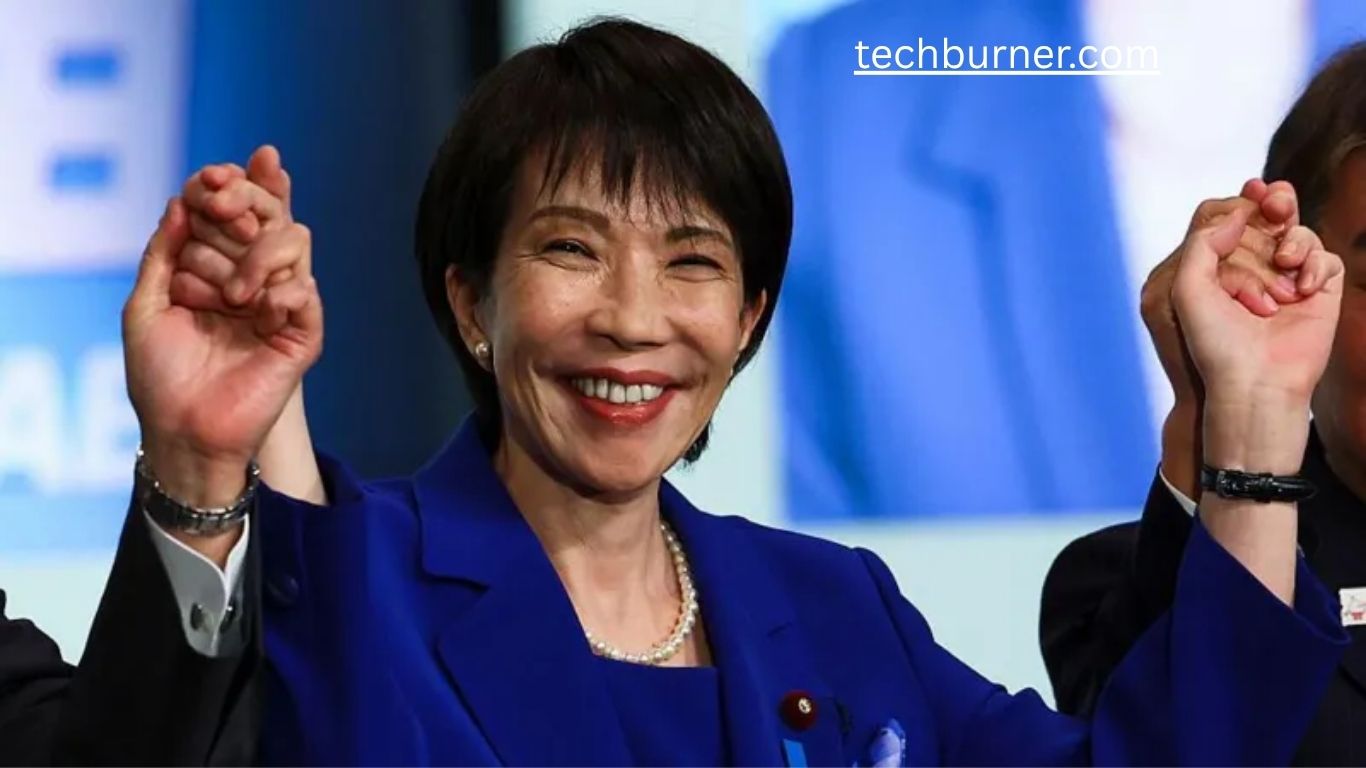Japan has witnessed a historic milestone as Sanae Takaichi becomes the nation’s first female prime minister, breaking a long-standing gender barrier in Japanese politics. Her election marks a turning point for the country’s political landscape and a bold new chapter for the Liberal Democratic Party (LDP), which has dominated Japanese governance for decades.
- A Landmark Victory in Parliament
- Japan at a Crossroads: Economic and Social Challenges
- Political Turmoil and Public Distrust
- The ‘Iron Lady’ of Japan: A Conservative Visionary
- Critics like 21-year-old student Ayda Ogura voice this skepticism:
- Navigating Japan’s Foreign Policy Minefield
- Restoring Market Confidence and Investor Trust
- A Symbol of Change—or Continuity?
- Frequently Asked Questions:
- Who is Sanae Takaichi?
- When was Sanae Takaichi elected as Japan’s prime minister?
- Why is Sanae Takaichi’s election historically significant?
- Which political party does Sanae Takaichi represent?
- What challenges does Prime Minister Takaichi face?
- How does Sanae Takaichi’s leadership style compare to Margaret Thatcher’s?
- What are Sanae Takaichi’s views on social issues?
- Conclusion
A Landmark Victory in Parliament
At 64, Sanae Takaichi achieved a decisive victory in both chambers of Japan’s parliament—securing 237 votes in the Lower House and 125 votes in the Upper House. Her triumph as the LDP leader was far from easy. After defeating four male rivals in the party’s internal election, she faced a political setback when the LDP’s coalition partner, the Komeito Party, withdrew its support.
However, a last-minute alliance with the Japan Innovation Party (JIP), commonly known as Ishin, revived her campaign and sealed her victory. This strategic partnership not only ensured her parliamentary majority but also strengthened her position ahead of the 2028 general elections, where she will again face the nation’s judgment.
Japan at a Crossroads: Economic and Social Challenges
Takaichi steps into office at a critical juncture. Japan’s economy—the fourth largest in the world—is navigating turbulent waters marked by rising living costs, stagnant wages, and declining consumer confidence. Inflation has hit families hard, and everyday essentials, from energy bills to food prices, have surged.
The nation also faces an ongoing rice shortage, driving record prices for the Japanese staple and fueling public frustration. To rebuild confidence, Takaichi has pledged to stabilize prices, support small businesses, and revitalize Japan’s manufacturing sector, which has long been a source of national pride.
While economic recovery is her immediate priority, Takaichi’s broader challenge lies in restoring trust in the ruling LDP, which has been weakened by corruption scandals and policy fatigue.
Political Turmoil and Public Distrust
Takaichi is Japan’s fourth prime minister in just five years, following a period of political instability fueled by scandals and plunging approval ratings. Her predecessor, Shigeru Ishiba, resigned after the party suffered major losses in midterm elections, leaving the LDP in disarray.
For the first time in fifteen years, the LDP lost its majority in the Lower House, and soon after, it lost control of the Upper House amid a damaging fundraising scandal. The party’s credibility crumbled, opening the door for rising right-wing movements like the Sanseito Party, which attracted disillusioned conservative voters.
Takaichi’s leadership is now viewed as the LDP’s last chance to reclaim its reputation and reconnect with the public.
The ‘Iron Lady’ of Japan: A Conservative Visionary
Nicknamed “Japan’s Iron Lady”, Sanae Takaichi is a staunch conservative inspired by former British Prime Minister Margaret Thatcher. Throughout her career, she has remained an unwavering ally of the late former Prime Minister Shinzo Abe, adopting similar policies on defense, economy, and nationalism.
Her views are deeply traditional—she opposes same-sex marriage and resists reforms that would allow married women to retain their maiden names. These stances have sparked debate about whether her historic win represents true progress for women’s empowerment or a symbolic victory that preserves the old order.
Critics like 21-year-old student Ayda Ogura voice this skepticism:
“People celebrate her as Japan’s first female prime minister, but her policies still support traditional gender norms. Instead of transforming the system, she maintains it.”
Despite these concerns, Takaichi’s policy proposals on women’s health, including expanding hospital services and enhancing recognition for household support workers, show attempts to address gender-related issues in her own conservative framework.
Navigating Japan’s Foreign Policy Minefield
On the global stage, Takaichi inherits complex diplomatic challenges. Japan’s relations with South Korea remain fragile, even after years of cautious improvement. Her right-wing nationalism and revisionist views on wartime history have made Seoul wary of renewed tensions.
Meanwhile, Japan’s relationship with China continues to strain under territorial disputes and growing military assertiveness in the region. Takaichi, like Abe before her, takes a hawkish stance toward Beijing, favoring a strong defense posture and tighter alliances with democratic partners.
However, the most pressing test lies with Japan’s closest ally—the United States. A high-stakes meeting with U.S. President Donald Trump is set for next week. While both nations have agreed on certain trade and tariff issues, Trump’s unpredictability—especially his remarks questioning the U.S.–Japan security treaty and demanding higher defense payments—poses a serious diplomatic challenge.
Takaichi must walk a fine line: defend Japan’s sovereignty while preserving the strategic alliance that underpins its national security.
Restoring Market Confidence and Investor Trust
Japan’s financial markets responded positively to Takaichi’s election, signaling cautious optimism. Analysts believe her reputation for discipline and fiscal conservatism could reassure investors worried about Japan’s ballooning national debt and sluggish growth.
Reports suggest she may appoint Satsuki Katayama as Finance Minister, marking another historic first for women in Japan’s cabinet. Katayama, also a protégé of Shinzo Abe, is known for her economic expertise and support for pro-business reforms. The appointment could help Takaichi signal a fresh and competent leadership team, balancing her conservative ideals with pragmatic economic management.
A Symbol of Change—or Continuity?
While Takaichi’s leadership is groundbreaking for gender representation, her policies largely mirror Japan’s conservative tradition. Supporters see her as a symbol of resilience and determination, while critics argue that true progress requires deeper structural reform, not just a change in face at the top.
Still, her journey from a young lawmaker to Japan’s highest political office remains inspirational for many women, especially in a society where female representation in leadership has long been limited. Her rise may not revolutionize gender equality overnight, but it shatters the psychological barrier that once made female premiership seem impossible.
Frequently Asked Questions:
Who is Sanae Takaichi?
Sanae Takaichi is a seasoned Japanese politician and member of the Liberal Democratic Party (LDP). Known for her conservative principles and admiration for former UK Prime Minister Margaret Thatcher, she has held multiple ministerial positions before being elected as Japan’s first female prime minister.
When was Sanae Takaichi elected as Japan’s prime minister?
She was officially elected by Japan’s parliament in October 2025, following her victory in the Liberal Democratic Party’s leadership election, where she triumphed over four male candidates.
Why is Sanae Takaichi’s election historically significant?
Her election marks a monumental moment in Japan’s history, as she becomes the first woman to hold the office of prime minister. It represents a major step forward for gender representation and political diversity in a traditionally male-dominated system.
Which political party does Sanae Takaichi represent?
She leads Japan’s Liberal Democratic Party (LDP), the country’s dominant conservative party, which has governed Japan for most of the past seven decades.
What challenges does Prime Minister Takaichi face?
Takaichi inherits a range of challenges, including rising living costs, public frustration over inflation, and a loss of trust in the ruling party due to past corruption scandals. She must also manage complex international relations with the United States, China, and South Korea.
How does Sanae Takaichi’s leadership style compare to Margaret Thatcher’s?
Often dubbed “Japan’s Iron Lady,” Takaichi’s leadership style mirrors Thatcher’s decisiveness, discipline, and conservative economic approach. Both emphasize fiscal responsibility, strong defense, and traditional values.
What are Sanae Takaichi’s views on social issues?
Takaichi holds traditional views on several social issues. She opposes same-sex marriage and has resisted proposals allowing married women to retain their maiden names. However, she supports initiatives improving women’s healthcare and economic participation.
Conclusion
Sanae Takaichi’s rise as Japan’s first female prime minister is more than a political milestone—it’s a symbol of transformation and resilience in a nation long bound by tradition. Her leadership marks a turning point, blending experience, conviction, and historical significance as Japan navigates a period of economic strain and social change. While her conservative stance may divide public opinion, her ascent undeniably shatters barriers and redefines the role of women in Japanese politics. As she takes on the monumental task of restoring trust, revitalizing the economy, and strengthening Japan’s global standing, Takaichi stands as a testament to perseverance and determination.












